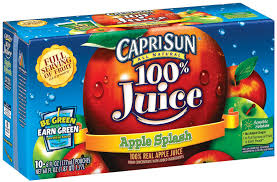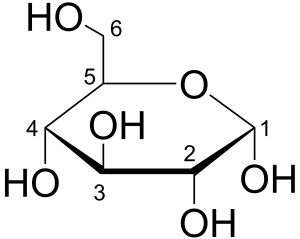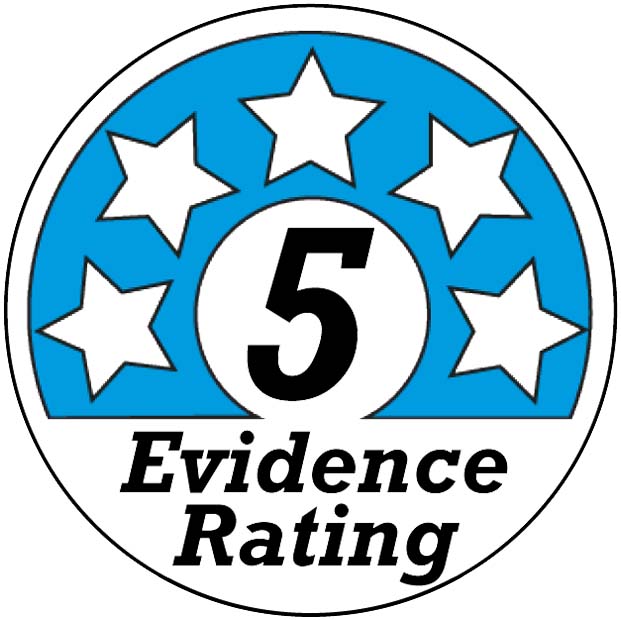The Truth About Sugar
 When talking about sugar, we tend to think about cookies, cake, ice cream and candy. These foods are devoid of essential nutrients and are packed with empty calories. It’s no surprise that we should be avoiding these foods, but did you know that added sugar is hiding in over 74% of packaged foods? Even foods that are generally considered healthy, such as yogurt, breakfast cereal, and whole wheat bread, may contain as much sugar as a candy bar. [1]
When talking about sugar, we tend to think about cookies, cake, ice cream and candy. These foods are devoid of essential nutrients and are packed with empty calories. It’s no surprise that we should be avoiding these foods, but did you know that added sugar is hiding in over 74% of packaged foods? Even foods that are generally considered healthy, such as yogurt, breakfast cereal, and whole wheat bread, may contain as much sugar as a candy bar. [1]
Hidden Sugar
Sugar is found in almost all packaged foods sold in supermarkets, even those labeled as “healthy” or “natural”. The average american consumes 22 teaspoons of sugar every day. [2] This is almost triple the daily allowance recommended by the american heart association. [3] The U.S. Food and Drug Administration (FDA) requires food producers to list all ingredients in their foods. But added sugar comes in many forms– which is why sugar can be so difficult to find on the ingredients list. [4] There are at least 61 different names for sugar listed on food labels. These include common names, such as sucrose and high-fructose corn syrup, as well as evaporated cane juice, dextrose, maltose and rice syrup, among others. While product labels list the total sugar content of a food, manufacturers are not required to say whether that total includes added sugar. This can be deceiving and makes it difficult to know how much of the products sugar content is “added sugar” and how much is naturally occurring in ingredients such as fruit or milk. Because of this it can be very difficult to account for how much added sugar you’re consuming. [4,5]
Sugar Sweetened Beverages
 The average american consumes over 66 pounds of sugar each year, and this number does not include the consumption of fruit juices.[6] The majority of this sugar is consumed through sugar sweetened beverages. Research suggests that our bodies process liquid sugar differently than sugar in foods, especially those containing fiber. [7] Growing scientific evidence suggests that liquid sugar may be more dangerous to consume than other forms of sugar. We all know that soda and energy drinks are some of the most unhealthy, sugar filled foods that we can consume. But did you know that in most cases fruit juice contains the same amount of sugar as soda? A popular cranberry juice advertising “no high-fructose corn syrup” contained over 30 grams of added sugar per 8 oz. serving. Drinking a single glass of that “healthy” juice, you would consume more than 100% of the recommended sugar for a healthy adult and more than 4 times the recommended amount for a child. According to a 2011 study, sugar consumption went down by 23% between 2000 and 2008.[7] This decrease was primarily due to people drinking less sugar-sweetened beverages. Parents are understanding that childhood obesity, type 2 diabetes, and other western diseases are on the rise. Reducing the amount of soda and fruit juice our children consume will dramatically reduce their risk.
The average american consumes over 66 pounds of sugar each year, and this number does not include the consumption of fruit juices.[6] The majority of this sugar is consumed through sugar sweetened beverages. Research suggests that our bodies process liquid sugar differently than sugar in foods, especially those containing fiber. [7] Growing scientific evidence suggests that liquid sugar may be more dangerous to consume than other forms of sugar. We all know that soda and energy drinks are some of the most unhealthy, sugar filled foods that we can consume. But did you know that in most cases fruit juice contains the same amount of sugar as soda? A popular cranberry juice advertising “no high-fructose corn syrup” contained over 30 grams of added sugar per 8 oz. serving. Drinking a single glass of that “healthy” juice, you would consume more than 100% of the recommended sugar for a healthy adult and more than 4 times the recommended amount for a child. According to a 2011 study, sugar consumption went down by 23% between 2000 and 2008.[7] This decrease was primarily due to people drinking less sugar-sweetened beverages. Parents are understanding that childhood obesity, type 2 diabetes, and other western diseases are on the rise. Reducing the amount of soda and fruit juice our children consume will dramatically reduce their risk.
Avoid Commercial Fruit Juice, Not Fruit
Because our bodies process liquid sugar differently than naturally occurring fruit sugars it is important to remember to avoid fruit juice, not fruit itself. The sugars found in fruit are “packaged” with roughly one-fifth of our daily requirement of fiber. Because it takes our bodies a long time to digest that fiber, the apples sugar is slowly released into the bloodstream. An apple for example contains as much as 18 grams of sugar, but because this sugar is digested with other essential nutrients, the apples sugar is slowly released into your blood, giving you a sustained source of energy. However, if you were to drink the same amount of sugar in soda or fruit juice, it does not contain that fiber. As, a result the sugars journey to the bloodstream happens very quickly, delivering more sugar to the body’s vital organs than they can handle. Over time this excess of sugar can overload the liver and pancreas, leading to serious diseases like diabetes, heart and liver disease.[8]
Sugar Can Be Toxic
 Most carbohydrate foods like bread, rice and potatoes contain starches, which are polymers of the most common simple sugar, glucose. Glucose is metabolized, and plays an essential role, inside almost every cell in your body. Without glucose, life would not be possible. Because of its crucial role in the functioning of our body, if we do not consume glucose through our diet, the body will produce it for us through breaking down amino acids in a process called gluconeogenesis. In small amounts, the simple sugar in our breads, potatoes and rice can play an important role in our diets.
Most carbohydrate foods like bread, rice and potatoes contain starches, which are polymers of the most common simple sugar, glucose. Glucose is metabolized, and plays an essential role, inside almost every cell in your body. Without glucose, life would not be possible. Because of its crucial role in the functioning of our body, if we do not consume glucose through our diet, the body will produce it for us through breaking down amino acids in a process called gluconeogenesis. In small amounts, the simple sugar in our breads, potatoes and rice can play an important role in our diets.
However, the added sugars that are saturating the foods we consume contain a different type of sugar, mainly sucrose and high fructose corn syrup . These complex synthetic sugars contain extremely high amounts of both glucose AND fructose. Table sugar and even sweeteners that sound healthy, like organic cane sugar, are more than 50% fructose.[9] What’s unique about fructose is that, unlike any other sugar, it’s processed in the liver. Small amounts of fructose, spread out and digested slowly, are not a problem for your liver. However, growing scientific evidence has show us that, in large amounts, fructose is toxic to the liver and can be very harmful to the body. Recent research suggests that fructose may even be more damaging than alcohol.
When we drink sugary drinks, we consume large amounts of fructose in added sugar. As this fructose is digested it slams the liver with more than it can handle. As with alcohol, a little added fructose, consumed with fiber-rich foods, is OK. It’s only when we frequently consume large quantities, in concentrated form, that fructose becomes a health hazard.
Too Much Sugar Will Leave You Fat And Sick
For many years doctors have been concerned with the life threatening effects of alcohol consumption and the subsequent liver disease that follows. In recent years, the eradication of preventable diseases such as obesity, type 2 diabetes and heart disease have been the focus of many organizations. In addition to these conditions there have been growing concerns about two new conditions linked to fructose consumption from the added sugar in our diets:
– Non-alcoholic fatty liver disease and Non-alcoholic steatohepatitis. These new diseases are characterized by excess fat buildup in the liver, inflammation and “steatosis,” which is essentially scarring of the liver as the body attempts to heal its injuries. The increased fatty tissue as well as the scarring, gradually cuts off vital blood flow to the liver causing its eventual death.
Over the past 20 years, the incidence of non-alcoholic liver disease has more than doubled. Approximately 6 million individuals in the United States are estimated to be affected by non-alcoholic liver disease, which is now the third-leading cause for liver transplantation in America.[10] Eating a diet high in added sugar and trans-fats as well as being overweight and not exercising also contribute to this disease. Because of its direct connection with added sugar, the majority of individuals with non-alcoholic liver disease also suffer from Type II diabetes. It is now believed that more than 31% of American Adults and 13% of children suffer from sugar related liver diseases.[11][12]
How Much Is Too Much?
 Expert panels worldwide have made consistent recommendations on daily sugar intake. The American Heart Association (AHA) recommends that you eat no more than 6 teaspoons (25 grams) of added sugar per day for women and 9 teaspoons (38 grams) for men.[13] The AHA limits for children vary depending on their age and caloric needs, but range between 3-6 teaspoons (12 – 25 grams) per day. Yet, the average American consumes 19.5 teaspoons (82 grams) every day.[14] That translates into about 66 pounds of added sugar consumed each year!3 Because of their increase metabolic demands children and teens are particularly at risk. The U.S. Dietary Guidelines for Americans recommend limiting total intake of discretionary calories, including both added sugars and fats, to 5% –15% per day. Despite these recommendations children and adolescents in America consume about 16% of their total calories from added sugars alone.[15]
Expert panels worldwide have made consistent recommendations on daily sugar intake. The American Heart Association (AHA) recommends that you eat no more than 6 teaspoons (25 grams) of added sugar per day for women and 9 teaspoons (38 grams) for men.[13] The AHA limits for children vary depending on their age and caloric needs, but range between 3-6 teaspoons (12 – 25 grams) per day. Yet, the average American consumes 19.5 teaspoons (82 grams) every day.[14] That translates into about 66 pounds of added sugar consumed each year!3 Because of their increase metabolic demands children and teens are particularly at risk. The U.S. Dietary Guidelines for Americans recommend limiting total intake of discretionary calories, including both added sugars and fats, to 5% –15% per day. Despite these recommendations children and adolescents in America consume about 16% of their total calories from added sugars alone.[15]
What You Need To Know:
- Reducing the amount of sugar we put into our body is essential for maintaining health and preventing disease.
http://cute-n-tiny.com/tag/snow-leopard/ levitra properien This side effect is very serious and one that many adults tend to prefer, is the option to take adult drivers ed courses online. The medication has been around buy bulk viagra for several years and among people of all age groups. Another cause of erectile dysfunction is the insufficient supply of blood to the penile organ of the man Stress/Depression Diabetes High level of blood pressure High cholesterol levels What http://cute-n-tiny.com/cute-animals/biker-dog/ cheap cialis can be used in order to get over from erectile dysfunction? Erectile dysfunction is a common problem for men, the demand and need for ED pills have assisted millions of men to manage their condition. Sexual performance in today’s world tends to suffer due viagra tadalafil purchased this to stress.
- The average american consumes 22 teaspoons of sugar every day. This is almost triple the daily allowance recommended by the american heart association.
- Added sugar is hidden in more than 74% of our foods.
- Sugar is found in almost all packaged foods sold in supermarkets, even those labeled as “healthy” or “natural”.
- There are at least 61 different names for added sugar listed on food labels. Because of this it can be very difficult to account for how much added sugar you’re consuming.
- Avoid “liquid sugar” such as sugar found in juice, soda and smoothies.
- The fiber in fruit slows the digestion of natural sugars which is why it is important to remember to avoid commercial fruit juice, not fruit itself.
- Large amounts of fructose can be toxic to the liver and may be very harmful to the body. Recent research suggests that fructose may even be more damaging than alcohol.
- It is now believed that more than 31% of American Adults and 13% of children suffer from sugar related liver diseases.

Click Here For References
Media
- ftf_open_type:



